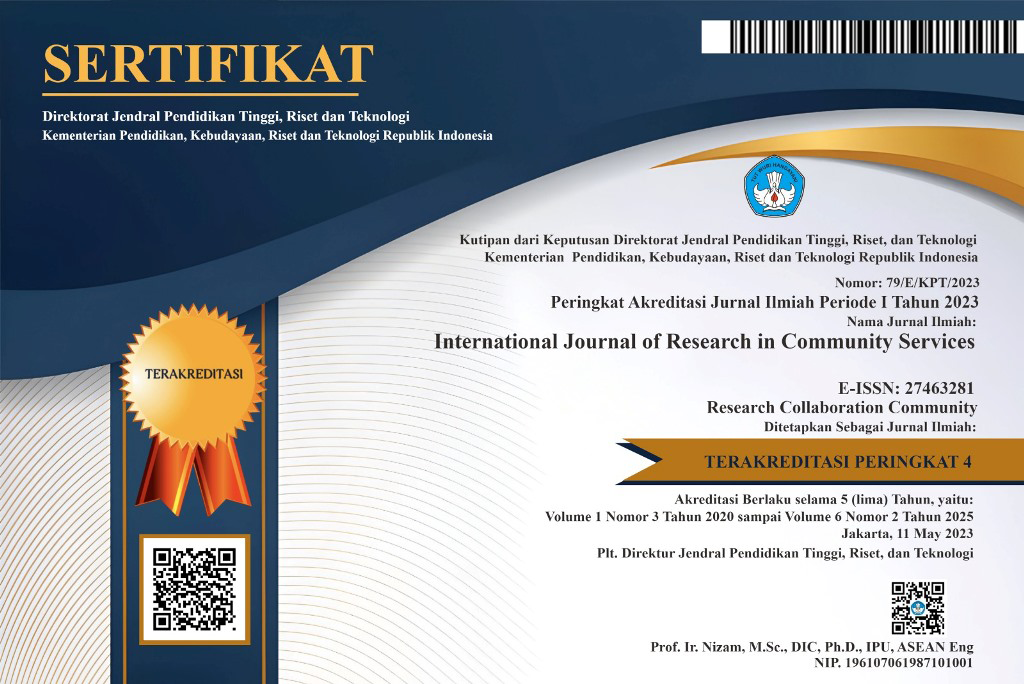The Study of Value-At-Risk Calculation and Back-testing Using the ARMA-GARCH Model Based on Stock Returns: An Overview
Abstract
Stocks are investment instruments that provide returns but tend to be risky. The most important component of investing is volatility, where volatility is identical to the standard conditional deviation of stock price return. The important thing in investing in addition to return is a risk. Value-at-Risk (VaR) is a statistical method of estimating maximum losses. To evaluate the quality of VaR estimates, models should always be back-tested with appropriate methods. Back-testing is a statistical procedure in which actual gains and losses are systematically compared to appropriate VaR estimates. To evaluate the quality of VaR estimates, models should always be back-tested with appropriate methods. Back-testing is a statistical procedure in which actual gains and losses are systematically compared to appropriate VaR estimates. The goal of the study was to estimate the Autoregressive Moving Average-Generalized Conditional Heteroscedastic (ARMA-GARCH) model to determine Value-at-Risk and back-testing. ARMA is a combination of AR and MA models, while GARCH is a time series model with symmetrical properties. The method in this study is systematic browsing of libraries. Systematic library tracing is an attempt to identify, evaluate, and interpret all research relevant to a particular phenomenon.
Keywords
References
Alberg, D., Shalit, H., & Yosef, R. (2008). Estimating stock market volatility using asymmetric GARCH models. Applied Financial Economics, 18(15), 1201-1208.
Bucevska, V. (2013). An Empirical evaluation of GARCH models in value-at-risk estimation: Evidence from the Macedonian stock exchange. Business Systems Research: International journal of the Society for Advancing Innovation and Research in Economy, 4(1), 49-64.
Budgen, D., & Brereton, P. (2006). Performing systematic literature reviews in software engineering. In Proceedings of the 28th international conference on Software engineering (pp. 1051-1052).
Campbell, J. Y., Lo, A. W., MacKinlay, A. C., & Whitelaw, R. F. (1998). The econometrics of financial markets. Macroeconomic Dynamics, 2(4), 559-562.
Christoffersen, P., & Pelletier, D. (2004). Back-testing value-at-risk: A duration-based approach. Journal of Financial Econometrics, 2(1), 84-108.
Dwipa, N. M. S. (2016). Glosten Jagannathan Runkle-generalized autoregressive conditional heteroscedastic (GJR-GARCH) method for value-at-risk (VaR) forecasting. Proceeding of ICMSE, 3(1), M-63.
Engle, R. F. (1982). Autoregressive conditional heteroscedasticity with estimates of the variance of United Kingdom inflation. Econometrica: Journal of the econometric society, 987-1007.
Hentschel, L. (1995). All in the family nesting symmetric and asymmetric GARCH models. Journal of financial economics, 39(1), 71-104.
Hong, L. J., Hu, Z., & Liu, G. (2014). Monte Carlo methods for value-at-risk and conditional value-at-risk: a review. ACM Transactions on Modeling and Computer Simulation (TOMACS), 24(4), 1-37.
Horv, L., & Kokoszka, P. (2003). GARCH processes: structure and estimation. Bernoulli, 9(2), 201-227.
Jorion, P. (2001). Value at Risk, second edition. McGraw-Hill, New York.
Kitchenham, B. (2004). Procedures for performing systematic reviews. Keele, UK, Keele University, 33(2004), 1-26.
Lesmana, E., Susanti, D., Napitupulu, H., & Hidayat, Y. (2017). Estimating the Value-at-Risk for some stocks at the capital market in Indonesia based on ARMA-FIGARCH models. In Journal of Physics: Conference Series (Vol. 909, No. 1, p. 012040). IOP Publishing.
Leung, M., Li, Y., Pantelous, A. A., & Vigne, S. A. (2021). Bayesian Value-at-Risk backtesting: The case of annuity pricing. European Journal of Operational Research, 293(2), 786-801.
Makridakis, S., & Hibon, M. (1997). ARMA models and the Box–Jenkins methodology. Journal of forecasting, 16(3), 147-163.
Maruddani, D. A. I., Rahmawati, R., & Hoyyi, A. (2021). ARMA-GARCH model for value-at-risk (VaR) prediction on stocks of PT. Astra Agro Lestari. Tbk. J. Math. Comput. Sci., 11(2), 2136-2152.
McNeil, A. J., Frey, R., & Embrechts, P. (2015). Quantitative risk management: concepts, techniques and tools-revised edition. Princeton university press, Princeton, New Jersey.
Miftahurrohmah, B., Wulandari, C., & Dharmawan, Y. S. (2021). Investment Modelling Using Value at Risk Bayesian Mixture Modelling Approach and Backtesting to Assess Stock Risk. Journal of Information Systems Engineering and Business Intelligence, 7(1), 11-21.
Nadarajah, S., & Chan, S. (2016). Estimation methods for value at risk. Extreme Events in Finance: A Handbook of Extreme Value Theory and its Applications, 283-356.
Olowe, R. A. (2010). Oil price volatility, global financial crisis and the month-of-the-year effect. International Journal of Business and Management, 5(11), 156.
Rockafellar, R. T., & Uryasev, S. (2000). Optimization of conditional value-at-risk. Journal of risk, 2, 21-42.
Ruppert, D., & Matteson, D. S. (2011). Statistics and data analysis for financial engineering (Vol. 13). New York: Springer.
So, M. K., & Philip, L. H. (2006). Empirical analysis of GARCH models in value at risk estimation. Journal of International Financial Markets, Institutions and Money, 16(2), 180-197.
Sukono, E. S., Simanjuntak, A., Santoso, A., Ghazali, P. L., & Bon, A. T. (2019). ARIMA-GARCH Model for estimation of value-at-risk and expected shortfall of some stocks in Indonesian capital market. Proceedings of the International Conference on Industrial Engineering and Operations Management Riyadh, 327-334.
Susanti, D., Najmia, M., Lesmana, E., Napitupulu, H., Supian, S., & Putra, A. S. (2018). Analysis of stock investment selection based on CAPM using covariance and genetic algorithm approach. In IOP Conference Series: Materials Science and Engineering 332(1), (p. 012046).
Tamilselvan, M., & Vali, S. M. (2016). Forecasting stock market volatility-evidence from muscat security market using GARCH models. International Journal of Commerce and Finance, 2(1), 37-53.
Tandelilin, E. (2010). Portofolio and investment. Edisi Pertama. Yogyakarta: BPFE.
Tsay, R.S. (2005). Analysis of financial time series. Second Edition. University of Chicago. John Wiley & Sons, Inc.
DOI: https://doi.org/10.46336/ijrcs.v3i4.368
Refbacks
- There are currently no refbacks.
Copyright (c) 2022 International Journal of Research in Community Services

This work is licensed under a Creative Commons Attribution 4.0 International License.
Published By:
IJRCS: Jalan Riung Ampuh No. 3, Riung Bandung, Kota Bandung 40295, Jawa Barat, Indonesia
Indexed By:

This work is licensed under a Creative Commons Attribution 4.0 International License.
View My Stats








